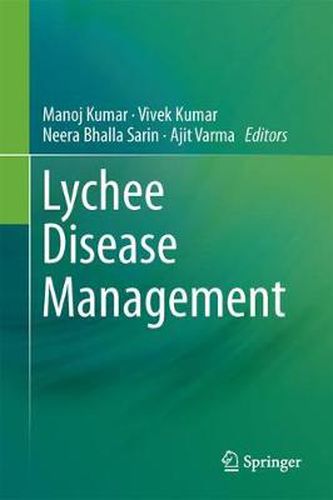Readings Newsletter
Become a Readings Member to make your shopping experience even easier.
Sign in or sign up for free!
You’re not far away from qualifying for FREE standard shipping within Australia
You’ve qualified for FREE standard shipping within Australia
The cart is loading…






This book offers a comprehensive compilation of biotic and abiotic factors that affect lychee production and commercialization. It addresses disease management for a range of causal agents, including the leaf mite (Acerya litchi Keifer), leaf miner (Conopomorpha cramerella), fruit borers (Conopomorpha cramerella, Platypeplus aprobola Meyer and Dichocrosis sp.), leaf webber / roller (Platypepla aprobola Meyer), litchi bug (Tessarotoma javanica Thunb), bark-eating caterpillar (Indarbela quadrinotata) and shoot borer (Chlumetia transversa), etc.
Specialized chapters highlight potential approaches to optimizing and increasing the scope of lychee export, as well as systematic research on the development and refinement of technologies for enhancing lychee productivity and quality. Further aspects addressed include post-harvest handling, processing and value addition, the development of tolerant varieties, high yield and processing. As such, ‘Lychee Disease Management’ offers a valuable resource dedicated to the global agriculture community, which is currently facing considerable production and commercialization problems.
$9.00 standard shipping within Australia
FREE standard shipping within Australia for orders over $100.00
Express & International shipping calculated at checkout
This book offers a comprehensive compilation of biotic and abiotic factors that affect lychee production and commercialization. It addresses disease management for a range of causal agents, including the leaf mite (Acerya litchi Keifer), leaf miner (Conopomorpha cramerella), fruit borers (Conopomorpha cramerella, Platypeplus aprobola Meyer and Dichocrosis sp.), leaf webber / roller (Platypepla aprobola Meyer), litchi bug (Tessarotoma javanica Thunb), bark-eating caterpillar (Indarbela quadrinotata) and shoot borer (Chlumetia transversa), etc.
Specialized chapters highlight potential approaches to optimizing and increasing the scope of lychee export, as well as systematic research on the development and refinement of technologies for enhancing lychee productivity and quality. Further aspects addressed include post-harvest handling, processing and value addition, the development of tolerant varieties, high yield and processing. As such, ‘Lychee Disease Management’ offers a valuable resource dedicated to the global agriculture community, which is currently facing considerable production and commercialization problems.